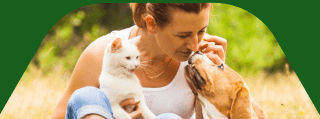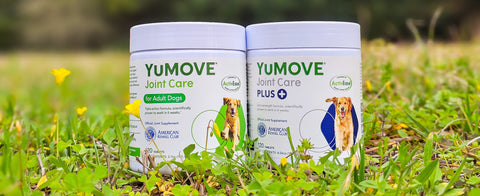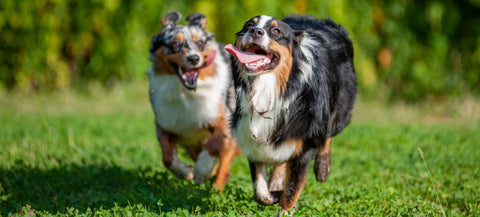There are a range of scenarios where you might need to lift your dog to help his joints – from getting into the car, to getting onto the vet’s table. It’s important that you lift your dog calmly, carefully, and with the right technique. We love an air-lifted cuddle with our furry friends, but remember to be mindful of pre-existing medical conditions, age, and the health of your dog. We’ve collected some hints and tips on how best to support your dog’s joints when you need to give him a hand..
Love a snuggle with your furry friend? If you like to share your bed or your couch, you’re certainly not alone - just be sure to avoid uneven jumps on and off the higher platform. Train them to ‘wait’ by the sofa or bed, then lift them up, and down again. The best way to lift a dog depends on how big your pet is:
- Small-medium – slide your dominant arm under the chest between the front legs, and tuck the back end between your arm and body as you lift.
- Medium-large – put your arm behind their back legs, your other arm around the chest in front of the back legs, then hold your pet against your chest as you lift.
- With larger dogs, remember your manual handling training – keep your back straight and lift through your legs so you don't stress your joints!
- Very large dogs – get a ramp or step or use a board or bed (and a helper).
- Senior dog, heavy pup or needs extra joint support? – Treat them to a step or ramp. There are lots of different dog ramps available, and most pets take to them very quickly. Get inspired with some of these DIY ideas, or head to a large pet store to try out different kinds with your dog.
Training your dog to use the ramp is easy – be patient and lure with treats. If you have a very nervous dog, start by just placing treats on the ramp, and very gradually build up a treat trail! A little peanut butter can tempt them to step up and stand on the ramp for the first time, and once they get used to the sensation, they’ll soon take to it like a pro.
Never lift a dog by their legs or using their ‘armpits’ like you might a child, and always give your dog a verbal cue so you don't surprise them. Dr Becker explains it well in this article, and there’s a video, too.
Committed couch jumper?

If you’ve got a dog who loves to jump and is on the couch as soon as your back is turned, you can make the environment safer by:
- Adding a step or ramp.
- Making sure your couch is on a non-slip surface. (Think about adding a rug with sticky backing if your floor is slippery laminate or linoleum.)
- Clearing their path for a smooth landing or reconfigure your layout to allow for plenty of clear space.
Support your dog’s joints

Many dogs will benefit from a joint supplement to support healthy joint function and promote mobility. If your dog is stiff or getting older, YuMOVE Dog Soft Chews eases joint stiffness from normal exercise, promotes cartilage development and maintains joint mobility.
However, a good joint supplement isn’t a ‘carte blanche’ for couch-jumping and bed bouncing… we recommend that you discourage this behavior if you can. Here at Lintbells, when it comes to protecting dog joints we’re very much of the ‘better safe than sorry’ camp!
Do you have tips of your own when it comes to caring for your dog’s physical health? Leave a comment below and join our pet-loving community on the Lintbells Facebook page.











